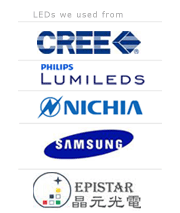Products
Search
Popular search



DALI Dimming
DALI Digital Addressable Lighting Interface
DALI is an International Standard (IEC 62386) for the control of electronic ballasts, transformers, LED’s, emergency lights and exit signs in an easy to manage digital lighting control system.
DALI provides benefits for:
Designers & ConsultantsInstallers & Electrical ContractorsSystem IntegratorsBuilding Occupants & TenantsFacility ManagersBuilding Owners
At present, the DALI dimmable LED panel light is available now , please contact with our sales dept. (sales@ledpanellights.com or sales@theledlight.com.cn ) to get the details and arrange the order.
Knowledge of DALI sytem
IEC 60929 and IEC 62386 are technical standards for network-based systems that control lighting in buildings. They were established as a successor for 0-10 V lighting control systems, and as an open standard alternative to Digital Signal Interface (DSI), on which it is based. IEC 60929 is the first version of the standard and will be withdrawn by 23rd of June 2014. Members of the AG DALI are allowed to use the Digital Addressable Lighting Interface (DALI) trademark on devices that are compliant with the current standard. Non AG DALI members can apply for a fee bearing licence.
A DALI network consists of a controller and one or more lighting devices (e.g., electrical ballasts and dimmers) that have DALI interfaces. The controller can monitor and control each light by means of a bi-directional data exchange. The DALI protocol permits devices to be individually addressed and it also incorporates Group and Scene broadcast messages to simultaneously address multiple devices (e.g., “Group 1 goto 100%” or “Recall Scene 1”).
Each lighting device is assigned a unique static address in the numeric range 0 to 63, making possible up to 64 devices in a standalone system. Alternatively, DALI can be used as a subsystem via DALI gateways to address more than 64 devices. Data is transferred between controller and devices by means of an asynchronous, half-duplex, serial protocol over a two-wire differential bus, with a fixed data transfer rate of 1200 bit/s.
DALI requires a single pair of wires to form the bus for communication to all devices on a single DALI network. The network can be arranged in a bus or star topology, or a combination of these. The DALI System is not classified as SELV (Separated Extra Low Voltage) and therefore may be run next to the mains cables or within a multi-core cable that includes mains power. The DALI data is transmitted using manchester encoding and has a high signal to noise ratio which enables reliable communications in the presence of a large amount of electrical noise. DALI employs a diode bridge in the interface circuitry so that devices can be wired without regard for polarity. Signal level are defined as 0±4.5 V for “0” and 16±6.5 V for “1”.[1] Central interface power maximum is 250 mA and 2 mA per unit.[1] The network cable is required to be mains-rated, with 600 V isolation and at least a 1 mm cross-section, with a maximum drop of 2 volts along the cable (max 300 m).[1] Signal interface is galvanically separated and doesn’t need any termination resistors.
Earlier generations of DALI devices stored configuration data in EEPROM, which was problematic due to the limited number of write cycles supported by EEPROMs. In current generations of DALI devices, RAM is used in preference to EEPROM during normal operation, which significantly reduces the number of EEPROM writes and thus extends their lifetimes. This use of RAM, however, is patented and therefore mandates payment of a license fee.
[Above information from WIKIPEDIA.ORG]
DALI is a dedicated protocol purely for lighting control. This means that DALI cannot be used to control other systems such as BMS.
However, DALI is effective for scene selection and for getting feedback regarding faulty light sources. This makes it very useful to use together with building automation systems where remote supervising and service reports are required.
SYSTEM DESCRIPTION
MAIN DALI FEATURES AND BENEFITS COMPARED TO 1-10V ANALOGUE CONTROL SYSTEMS
Individual control of fittings: each unit in the DALI network has it´s own individual address, therefore it is possible to communicate directly to the components in the fittings
Multichannelling use: through only one pair of control cable it is possible with DALI to control several different groups of fittings
No mains switching needed: the lights can be switched off by commands comming directly from the DALI control system making the mains switch unnecessary
Backchannelling: the information flow is bidirectional with the DALI system. Instead of only giving commands about the light level to the fitting DALI system enables also information feedback on the condition of the fittings. the fitting can transmit information about
whether the light is switched on or off,
the preset light level
the ballast condition
simple DALI wiring: the cabling consists of a simple two wire cable, independent of any building topology between the units in the system
Easy system re-configuration: once the system is installed and configured it is very easy to change the functioning of the system, changing of scenes and functions of lighting is only a matter of programming and needs no hardware changes anymore
easy to add new components: when the lighting system needs to be enlargened new components can be added anywhere in the DALI system, no wiring configuration rules apply on the DALI line in this aspect.
MAIN DIFFERENCES BETWEEN DALI AND BUILDING AUTOMATION BUSES
DALI has a limited system size (64 addresses).
DALI is meant only for communication in lighting systems as BMS includes other functionality as well (HVAC, alarm systems…)
A BMS system commonly has unlimited expansion possibilities, which DALI does not have
DALI is not competing against BMS systems, it is only complementing them through an interface
[Above information from DALI-AG.ORG]

|
|
|
|
||||||||


